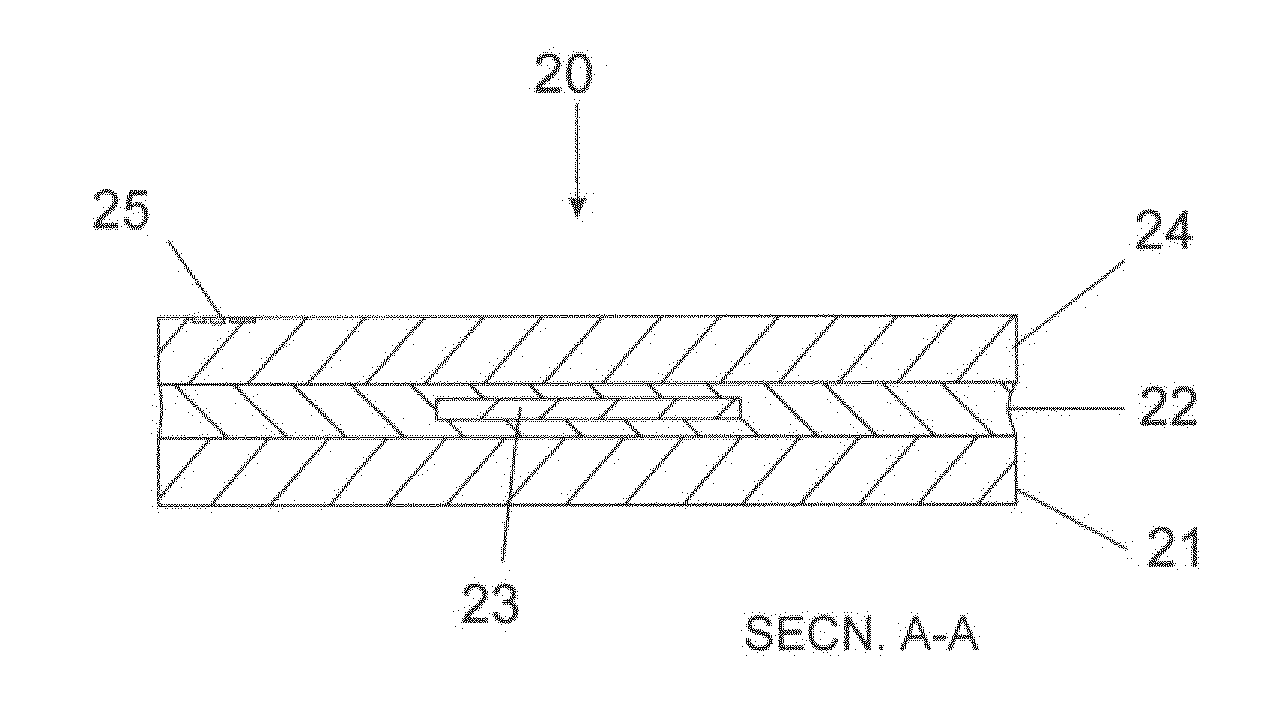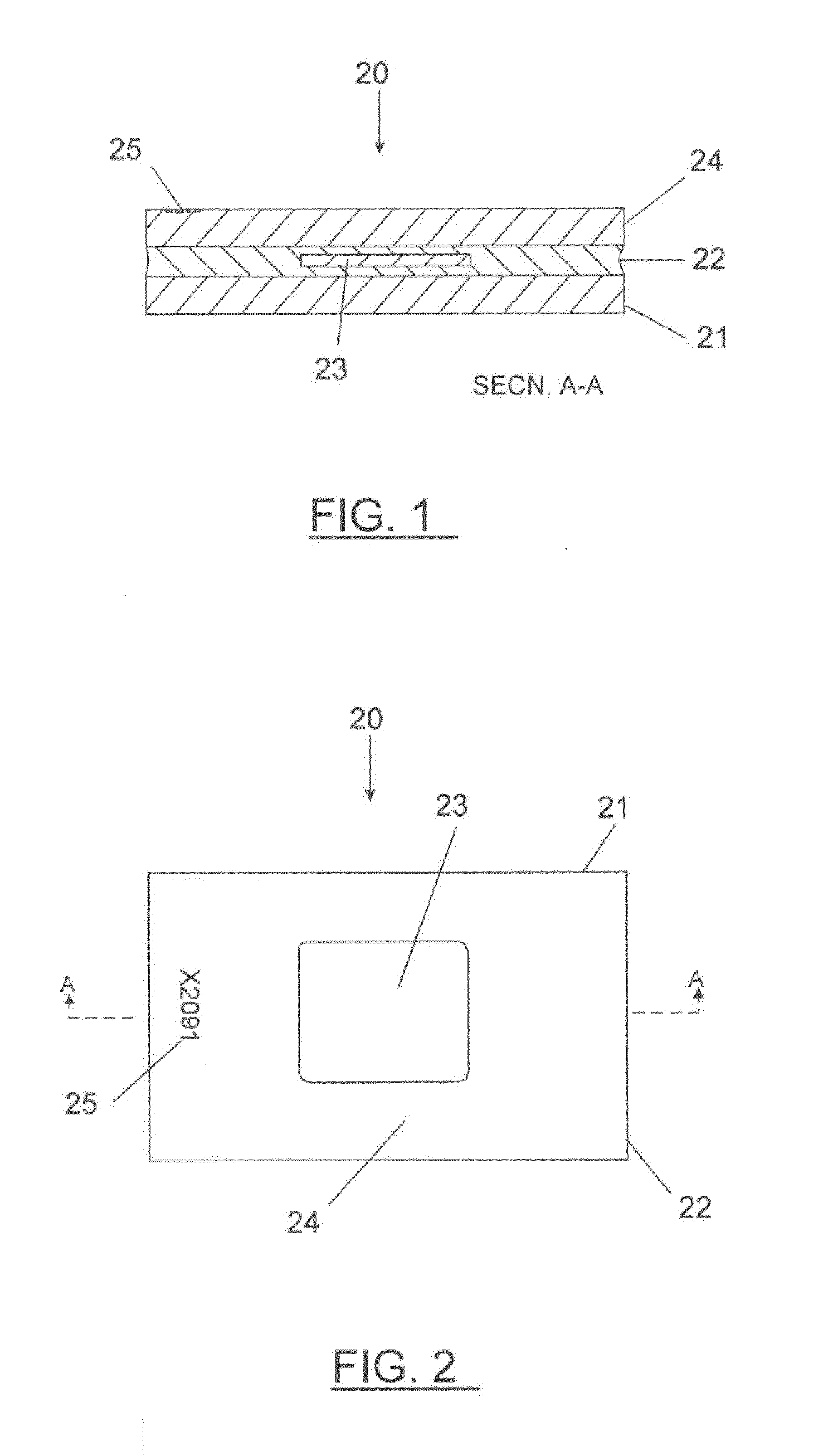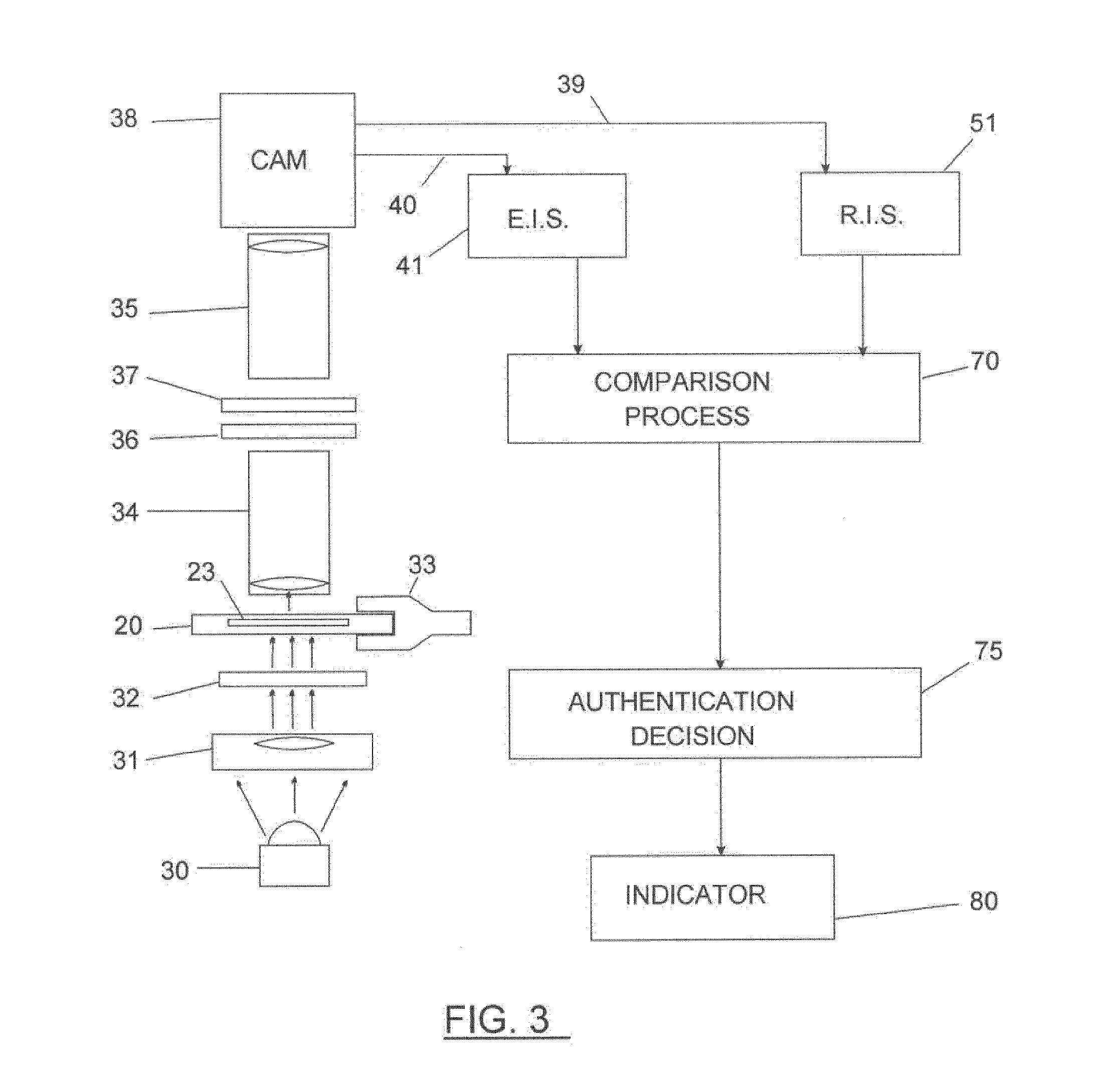Security token and authentication
a technology of security tokens and authenticators, applied in instruments, sensing by electromagnetic radiation, transportation and packaging, etc., can solve the problems of losing consumer-confidence in the system, affecting both parties, and high ‘false-reject’ rate, and achieve the effect of convenient availability
- Summary
- Abstract
- Description
- Claims
- Application Information
AI Technical Summary
Benefits of technology
Problems solved by technology
Method used
Image
Examples
Embodiment Construction
[0144]The technical fields of transmitted-light optics, data-storage and handling, petrology, polarizing microscopes and crystallography are relevant to the following described examples.
[0145]A portable token and systems and methods for identification and authentication of the same are disclosed. With reference to FIG. 1, the portable token, 20, may be utilized for a variety of purposes and uses a thin section of rock, 23, as a unique identifying element, which is highly resistant to forgery or duplication. Identification and authorisation of tokens may be achieved by a system that uses optical examination of the microstructure and the refractive and absorptive properties of crystalline minerals within the identifying element, especially by transmitted polarized light techniques. Comparison between stored reference data and acquired examination data may be the basis for verifying authenticity. The naturally-occurring three-dimensional orientations of the optical axes of mineral crys...
PUM
 Login to View More
Login to View More Abstract
Description
Claims
Application Information
 Login to View More
Login to View More - R&D
- Intellectual Property
- Life Sciences
- Materials
- Tech Scout
- Unparalleled Data Quality
- Higher Quality Content
- 60% Fewer Hallucinations
Browse by: Latest US Patents, China's latest patents, Technical Efficacy Thesaurus, Application Domain, Technology Topic, Popular Technical Reports.
© 2025 PatSnap. All rights reserved.Legal|Privacy policy|Modern Slavery Act Transparency Statement|Sitemap|About US| Contact US: help@patsnap.com



